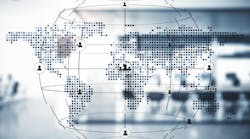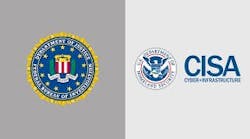LOS ANGELES -- People across Southern California on Thursday looked like they had stepped out of a disaster movie. Children ducked under their desks. Victims with fake blood lay on the ground. First responders sprang into action to treat the "wounded."
The controlled chaos was all part of a mock "Big One" - an earthquake drill billed as the largest in U.S. history and aimed at testing the preparedness of governments, emergency responders and residents.
At 10 a.m., a cast of millions dropped to the ground, covered their heads and held onto furniture. Local television stations interrupted their regular programming to announce the drill and covered it as they would a major earthquake, though with continual reminders that the emergency wasn't real.
Thursday's drill was based on a fictional magnitude-7.8 event on the southern San Andreas Fault. If such a quake occurred today, scientists estimate it would kill 1,800 people and cause $200 billion in damage. Some high-rises would fall, sections of freeways would crumble and gas pipes would crack.
The dress rehearsal served to remind Californians that they live on shaky ground that can rupture without warning. That southern San Andreas has not popped in more than three centuries, and scientists fear stress buildup could unleash a big quake.
"We're really taking a step forward toward earthquake safety," said Lucy Jones, a U.S. Geological Survey seismologist who has long urged residents to prepare.
At Bishop Alemany High School, a San Fernando Valley campus badly damaged by a 1971 quake and destroyed by the 1994 Northridge disaster, the football field was filled with hundreds of mock mass casualties who wore colored wristbands indicating the severity of their fake injuries.
Many of the students posing as faux victims said they were too young to remember Northridge, the last damaging quake in Southern California, which toppled bridges and buildings.
Olivia Paluch, 17, who sported a fake gash on her head and cheek, pondered the "Big One" as she waited for firefighters to take her away by stretcher.
"It's really scary seeing all my friends like this," Paluch said, gesturing to her fellow students painted with gruesome injuries on their bodies. "It's overwhelming."
Another student, Emily Loren, 17, lay on the ground nearby with a bandaged head. Loren said she was pretending to be a student who was studying in the library and got hit by a falling book during the shaking.
"It's exciting. It's better to be prepared. At the same time, it's nerve-racking," said Loren, who had a fake IV attached to her arm.
Even California's governor-actor played a role. Gov. Arnold Schwarzenegger arrived by helicopter at the football field triage center in the late morning to survey the situation. He thanked the federal government for funding the drill and praised the agencies that cooperated.
"It's one thing to talk about being ready for an emergency, but it's another thing to actually test it," Schwarzenegger said.
Some people, however, remained blase.
"I live under the assumption that the engineering going into these buildings is pretty sophisticated," said Grant Casner, who works on the ninth floor of a downtown high-rise and who didn't take part in the drill.
Although the statewide drill was scheduled to start at 10 a.m. Pacific time, Schwarzenegger surprised his staff by practicing the drill at 5 a.m. The governor said he was pleased by his staff's response.
Organizers said about 5 million people had signed up to participate. The exercise coincided with an annual disaster preparedness exercise held by the state. Unlike previous years, the simulation involved scores of governments, first responders, schools, businesses, churches and residents, all following the same script.
Under the scenario, the southern San Andreas suddenly awakens near the Mexican border, sending shock waves marching toward Los Angeles and eventually stopping in the high desert. The 200-mile rupture would leave a path of destruction. Shaking would last about three minutes.
The minimum participation called for people to dive for safety. Firefighters and other emergency responders staged full-scale exercises complete with search-and-rescue missions and medical triaging of people posing as casualty victims.
It was business as usual at Bishop Alemany High until sirens sounded shortly after 10 a.m. and a soundtrack simulating earthquake noise blared through the loudspeakers.
Spanish teacher Fiorella Linares, who had been checking homework, ordered her approximately 20 students to "cover," and they dove under desks and grabbed onto the legs of chairs.
Some of the teens giggled and joked. "I'm dying," one shouted in mock horror.
"Don't laugh," Linares scolded. "You have to think about what if this really happened."
Despite decades of research, scientists still cannot predict when an earthquake will strike.
California sits atop two of Earth's major tectonic plates and is the most seismically active state in the continental U.S. More than 300 faults crisscross the state including the mighty San Andreas, which spawned the monstrous 1906 San Francisco earthquake.
Less than half an hour after the exercise began, a small quake - magnitude-3.2 - hit central California, but it shook little and injured no one.
Scientists have long warned about the possibility of a "Big One." They recently calculated a 99.7 percent chance that a magnitude-6.7 quake or larger will rock the Golden State in the next 30 years. The chance of a magnitude-7.5 or greater was 46 percent during the same period with the epicenter more likely in Southern California.
As dire as Thursday's simulated quake seems, it's not the worst-case scenario, scientists say. The scenario, for instance, omits the presence of Santa Ana winds, which typically blow in the fall and have the ability to whip quake-sparked fires into infernos.
___
Associated Press writer Shaya Tayefe Mohajer contributed to this report.
____
On the Net:
ShakeOut Drill: http://www.shakeout.org/
Quake Movie: http://earthquake.usgs.gov/regional/nca/simulations/shakeout/


